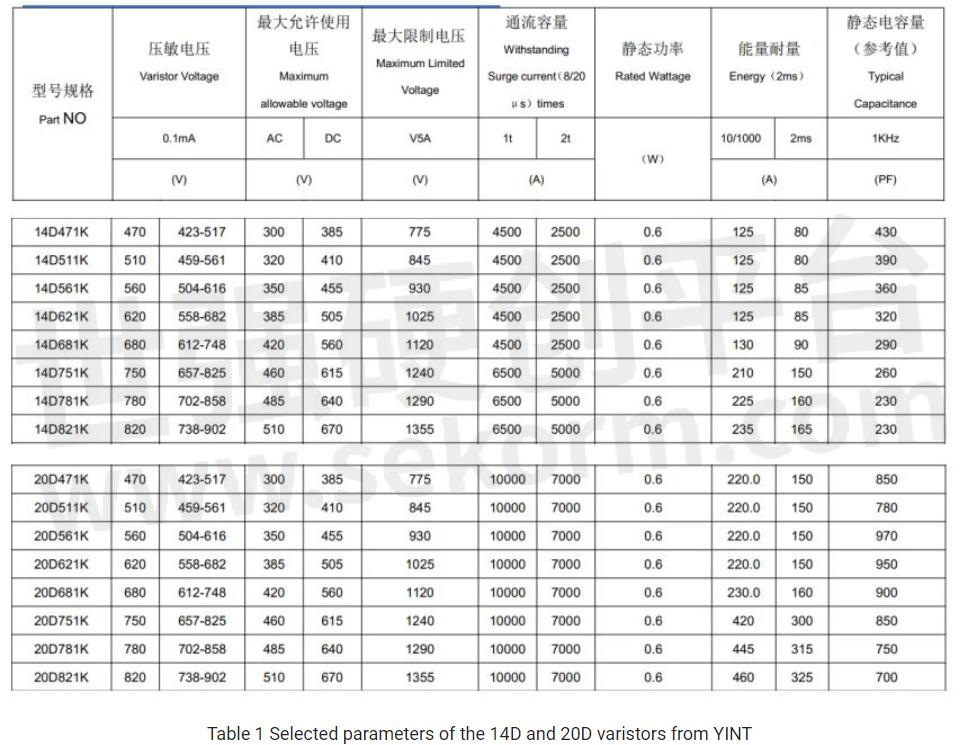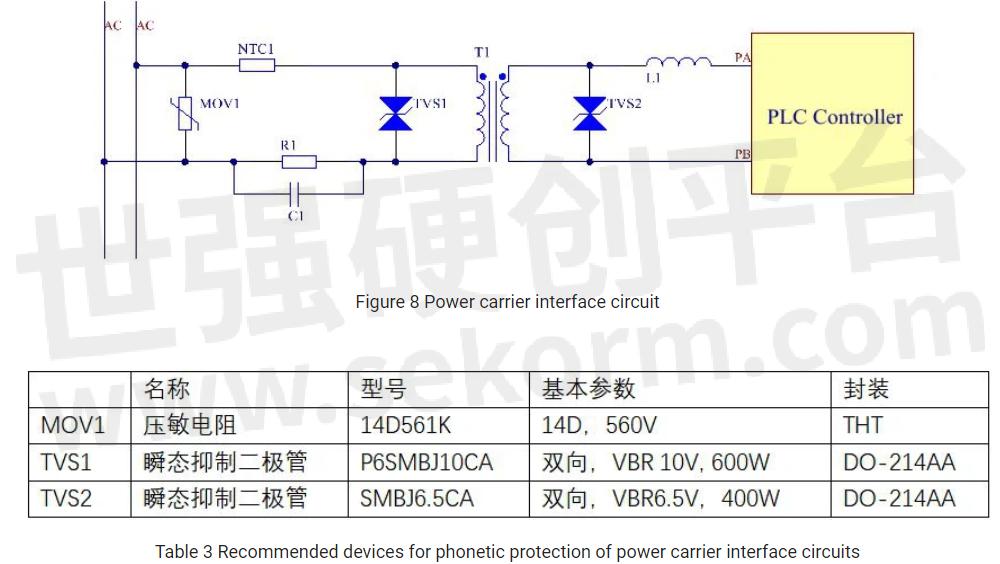YINT‘s Remote Centralized Meter Reading System and Its Circuit Protection Solutions




Preface
Electricity, gas, water, and heating bills are closely related to everyone's lives, and the disadvantages of manual meter reading, such as long time, low efficiency, inaccurate statistics, and high staff costs, are very obvious. If you take into account time-of-use billing such as step tariffs and time-of-use tariffs, as well as power quality (PQ) detection and real-time fault alarms, it is completely impossible to complete manual meter reading.
With the advancement of science and technology, driven by industry associations and major companies, coupled with macro-control at the national level, the remote centralized meter reading system has gradually become a mature and shaped solution, and is being promoted both at home and abroad.
YINT also takes full advantage of its own technology and resources in protection devices and plays an important role in the remote centralized meter reading system. It comprehensively designs circuit protection solutions for a more optimized and secure remote centralized meter reading system, for the design reference of smart meter AMR, collector, and centralizer design engineers.
Composition Of The Remote Metering System
The Concentrated Metering System is generally composed of four levels: terminal smart meters (water, electricity, gas, and heat), collector, concentrator, and back-end master station, as shown in the figure below.

Smart Meter
The terminal smart meter, Smart Meter, is the most grounded, and closest to the user, even in household metering, such as smart meters, water meters, gas meters, and heat meters for heating in the northern areas.

The main function of the smart terminal meter is to carry out terminal metering and fee control management, collecting information from the user terminal on the use of electricity, water, gas, and heat and displaying feedback-related information to the user, such as usage, current step price, precharged balance, etc..
The information collected from the user terminal needs to be uploaded in real-time (or in sections) from the collector to the server backend, and the management backend also needs to issue relevant fee control or security authentication management instructions, therefore, the smart terminal meter also integrates a communication module, and the common terminal meter adopts communication methods such as RS485, power carrier and infrared. As shown in Figure 3, the block diagram of the composition of the smart meter.

YINT has designed reliable and complete circuit protection solutions for the power management and communication circuits of smart electricity meters, smart water meters, smart gas meters, and smart heat meters, and has related test data under various test standards, and welcomes consultation and reference from smart terminal meter design engineers.
2.2 Collector
Smart terminal meters are generally one meter per household and some unit buildings use centralized meter installation, i.e. a unit of meters in a row neatly in one location. In this case, collectors can be applied to collect data from each meter centrally. Usually, a collector is installed nearby and manages 12, 32, or 64 meters by collecting meter pulses or communication methods such as rs232 (different types of collectors can be selected according to the number of meters) and then uploading the data from these meters through the power carrier to the concentrator.
This can also reduce the complexity and overall cost of the terminal meters. As shown in Figure 4, the main function of the collector is to send collection commands to the terminal meters and receive the pre-processed information from the terminal meters for uploading to the concentrator or server cloud via wireless GPRS or wired means.

The collector and the smart terminal meter generally use RS485, power carrier, MBUS, and other methods for command and data communication, and the higher-level concentrator can use GPRS, 4G, PSTN, Ethernet, NB-IoT, LoRa, and other wired or wireless networks to carry out data communication.
2.3 Concentrator
The Concentrator is the central management and control device of the remote centralized meter reading system. It is responsible for the regular reading of terminal data, system command transmission, data communication, network management, event recording, horizontal data transmission, and other functions. The functions are divided into the above collector functions.
2.4 Backstage master station (server, data management, cloud)
The backstage master station is used for the management interfaces, such as task management, data query, charging, etc.
As shown in the figure below, the system architecture and management platform functions of a wireless remote water meter:

3. Protection Circuit for Remote Collector System
YINT designs protection solutions for the hardware circuits of the terminal smart meters, collectors, and concentrators of the remote collector system, providing comprehensive and effective circuit protection solutions by analyzing the possible electromagnetic compatibility risks such as lightning strikes, surges, and static electricity in key areas such as power supply and signal interfaces. The main schemes are:
3.1 Voltage sampling and acquisition circuits
For smart meters, voltage signal collection is required, while the voltage and sampling methods of single-phase and three-phase meters are different. The following figure shows the voltage acquisition input terminal of a single-phase meter.

YINT recommends using varistors for input overvoltage protection. The recommended models are 14D or 20D products with voltages of 470V (single-phase 220V) ~ 820V (three-phase 380V):

3.2 Current sampling acquisition circuit
At the current collection input end of smart meters, TVS is often used for surge protection to protect subsequent metering chips.

YINT recommends the TVS model as SMBJ6.5CA or P6SMB6.8CA. Some of its parameters are as follows:

3.3 PLC interface circuit of power line carrier communication
Power Line Carrier PLC (Power Line Communication) has many application scenarios. The carrier circuit loads the communication signal to the power line through FSK and other methods and receives the signal transmitted from other systems through the power line and demodulates the relevant data.
The following figure shows a power carrier interface circuit.

3.4 RS485 communication interface circuit
RS485 communication is often used between the collector and the smart meter, or between the collector and the concentrator. Due to the complex and uncontrollable electromagnetic environment, RS485 chips are often impacted by surges and electrostatic shocks, causing damage to the system or components.

YINT recommends an RS485 communication port, using ESDSM712 electrostatic protection device. ESDSM712 adopts a 7V, 12V asymmetrical internal structure, which can suppress the static electricity or surge of common mode 12V and differential mode 14V for RS485 dual-line. The main parameters are:

3.5 Chip power supply protection
For the key chips in the system, the power supply input terminal of the TVS can use the ps-level response speed and precise clamping characteristics of the TVS to protect the power supply terminal of the chip from surge.

YINT recommends the surge protection device for the main MCU power supply side: SMF5.0CA

3.6 Wireless communication antenna protection
For the wireless communication module of the collector or concentrator, it is often necessary to perform electrostatic protection on the antenna interface end to prevent electrostatic disturbance from the antenna end, which affects the normal operation of the wireless communication module.

YINT recommends the use of low-capacity small package electrostatic protection device ESDLC5V0D9B, the package is SOD923, the capacitance is as low as 0.5pF, and the static electricity can reach up to ±30kV.
4. summary
With the development of the Internet of Things, more and more IoT meters have been developed for remote centralized meter reading systems, and there have been many changes in communication modes. YINT has also been tracking technological trends and devoting human and material resources to research protection solutions under new application scenarios to provide design references for all technical engineers.
- |
- +1 赞 0
- 收藏
- 评论 0
本文由叫我大表哥吧转载自Yint News,原文标题为:Introduction To The Remote Centralized Meter Reading System And Its Circuit Protection Solutions,本站所有转载文章系出于传递更多信息之目的,且明确注明来源,不希望被转载的媒体或个人可与我们联系,我们将立即进行删除处理。
相关推荐
【应用】音特电子为PEPS系统电路提供TVS保护方案,车规级产品满足控制器及智能钥匙需求
音特电子根据多年在汽车电子电磁兼容的经验,结合自身车规级产品的优势,对PEPS系统车载基站(车载基站)和定位标签(智能钥匙),提出综合保护方案,供用户设计参考。
Yint Electronics Developed A Solution for the Characteristics of RS232 Transmission
This solution is suitable for high-reliability indoor data equipment such as PC industrial control and data room. It has lower requirements for anti-surge, mainly electrostatic protection requirements. This solution meets IEC61000-4-2 CONTACT DISCHARGE: 8KV AIR DISCHARGE: 15KV.
Yint‘s ESDSR05-4 TVS Meet the Electrostatic Protection Design Of SIM Card Reading Circuit
The signal speed of the SIM card reading circuit is average and there are no special requirements. Its electrostatic protection can be used in ordinary TVS devices. Yint company‘s ESDSR05-4 can fully meet the electrostatic protection of SIM card reading circuits.
【技术】5种交流电源常用的防护电路
音特电子公司集研发、生产、销售和服务于一体,产品拥有自主知识产权,公司主要产品和服务包括:TVS瞬态抑制二极管、ESD静电保护元件、GDT气体放电管等产品及个性化的电路保护设计、专业化的客户解决方案,为客户免费提供EMC评估。
TVS二极管在LINBus通信中的作用
TVS二极管以保护敏感电子元件免受电压尖峰和瞬变影响能力而闻名,在确保LINBus系统完整性和使用寿命方面发挥着关键作用。本文深入探讨LINBus通信复杂性、重要性,TVS二极管如何为现代汽车网络稳健可靠运行做出贡献。
功率涵盖200W~15000W!TVS瞬态抑制二极管制造商音特电子授权世强硬创代理
音特电子授权世强硬创代理旗下ESD静电保护元件、PPTC自恢复保险丝、TSS半导体放电管、SBR肖特基二极管等产品,其中,TVS瞬态抑制二极管作为主推产品之一,功率涵盖200W~15000W!
【经验】音特电子4种直流电源的防护电路设计方案
音特电子是电路保护元器件制造商│解决方案服务商,产品拥有自主知识产权,公司主要产品和服务包括:TVS瞬态抑制二极管、ESD静电保护元件、GDT气体放电管等产品及个性化的电路保护设计、专业化的客户解决方案,为客户免费提供EMC评估。
音特电子14D系列压敏电阻选型表
音特电子14D系列压敏电阻选型表提供以下参数,压敏电压:18~1800V;最大允许使用电压AC:11~1000V;最大允许使用电压DC:14~1465V;最大限制电压:36~2970V;静态功率:0.1~0.6W。
|
产品型号
|
品类
|
压敏电压V1mA(V)
|
最大允许使用电压AC(V)
|
最大允许使用电压DC(V)
|
最大限制电压V-5A(V)
|
通流容量1.2/50μs&8/20μs Imax(A)
|
静态功率(W)
|
能量耐量10/1000 µs(J)
|
最大能量(Joule) 2ms
|
静态电容(参考值)1KHz(pf)
|
|
14D180K
|
压敏电阻
|
18(16~21)
|
11
|
14
|
36
|
1000
|
0.1
|
3.2
|
4.1
|
18000
|
选型表 - 音特电子 立即选型
【技术】TVS瞬态抑制二极管的玻璃钝化和O酸洗工艺差异?为何要加SIPOS工艺?
本文音特电子将为大家介绍TVS瞬态抑制二极管的玻璃钝化和O酸洗工艺差异?以及为何要加SIPOS工艺?供各位工程师参考及使用。
The Role of TVS Diodes in LINBus Communication
This article delves into the intricacies of LINBus communication, the importance of TVS diodes, and how they contribute to the robust and reliable operation of modern automotive networks.
音特电子(Yint Electronics)静电保护元件(ESD)选型指南
目录- Electrostatic Discharge Devices
型号- ESD5V0APB,ESD040208P030,ESD5V0D5B,ESD24VAPB,ESD24VD8,ESDULC3V3D8B,ESD3V3D3B,ESD5V0J4,ESDLC12VD3,ESDLC5V0D8B,ESD24VD3,ESDLC24VD8B,ESD24VD5,ESD5V0AP,ESD15VD3,ESDLC15VD3B,ESDLC3V3D3,ESDLC8V0D3,ESD36VD3,ESD15VD5,ESDLC8V0D3B,ESDLC15VD3,ESD12VD3B,ESD3V0J4,ESD060315P080,ESD5V0D3B,ESD3V3D9B,ESD24VD3B,ESD8V0D5B,ESD8V0APB,ESD36VAPB,ESDULC5V0D5B,ESDSR70,ESDSMDA15C,ESD3V3D8B,ESD36VAP,ESD040215P080,ESDULC3V3D9B,ESDLC5V0APB,ESDSR05,ESD12VAPB,ESD8V0AP,ESDSLVU2.8-4,ESDSRDA3.3-4,ESDSM712,ESDSR05AP,ESDLC24VD3B,ESD12VAP,ESD040218P080,ESDLC12VD3B,ESD5V0D9B,ESD8V0D3B,ESDSLVU2.8,ESD0524P,ESD12VD8B,ESD040212P060,ESD3304P,ESD36VD3B,ESD040205P015,ESD15VAPB,ESDLC5V0D3,ESDSRV05-4,ESD3304S,ESDLC3V3D3B,ESDULC5V0D9,ESDULC5V0D8,ESD060312P060,ESDULC5V0D5,ESD040224P080,ESDLC5V0D3B,ESD8V0D5,ESD5V0M5,ESD8V0D3,ESD3V3D8,ESD3V3D9,ESD3V3D5,ESD3V3D3,ESD3V3D5B,ESD060305P015,ESD12VD3,ESDULC3V3D8,ESDLC24VD3,ESDULC3V3D9,ESDSRVLC05-4,ESD3V3APB,ESD5V0L3,ESD5V0L4,ESD24VAP,ESDULC5V0D9B,ESD060318P080,ESD5V0D5,ESD12VD8,ESD12VD5,ESD5V0D3,ESD15VD3B,ESD5V0D9,ESD12VD9,ESD5V0D8,ESD15VAP,ESD5V0D8B,ESD5V0K5,ESD060308P030,ESDULC5V0D8B,ESDULC5V-4K5,ESD12V0D9B,ESD060324P080,ESD3V3AP
7D系列金属氧化物压敏电阻器
描述- 该资料介绍了金属氧化物压敏电阻7D系列的特性、应用领域和订购方法。主要内容包括压敏电阻的工作原理、不同型号的电气参数、应用范围以及如何根据需求选择合适的压敏电阻。
型号- 14D,7D330KJ,10D,7D560KJ,7D270KJ,7D121KJ,7D471KE,7D681KJ,7D821K,7D151KJ,7D SERIES,7D221KJ,7D271K,7D181K,7D781KH,7D781KJ,7D820KJ,7D121K,7D361KJ,7D101K,7D470KJ,5D,7D820K,7D181KJ,7D391KJ,7D331K,7D751K,7D561K,7D270K,7D391K,7D180K,7D751KH,7D271KJ,7D561KH,32D,7D331KJ,7D751KJ,20D,7D561KJ,7D101KJ,7D431KJ,7D621K,7D201KJ,7D680KJ,7D201K,7D621KH,7D471KJ,7D431KH,7D221K,7D431K,7D621KJ,7D330K,7D560K,7D241KJ,7D241K,7D220KJ,7D471K,7D681K,7D390K,7D551KH,7D301KJ,7D151K,7D511KJ,7D821KJ,7D471KH,7D821KH,7D681KH,7D,7D511K,7D301K,7D390KJ,7D180KJ,7D220K,7D680K,7D470K,7D361K,7D781K
音特电子邀您参观2024慕尼黑上海电子展暨新品发布会
2024慕尼黑上海电子展(electronica China)将于2024年7月8-10日在上海新国际博览中心举办,音特电子此次展示的主要展品包括TVS瞬态抑制二极管、ESD静电保护元件、PPTC自恢复保险丝、TSS半导体放电管、GDT气体放电管、SBR肖特基二极管、MOV压敏电阻、NTC热敏电阻、RD整流二极管、MOSFET场效应管、功率电感、共模电感、防雷器等产品。
MVR0603-5R5多层片式压敏电阻器
描述- 本资料介绍了MVR0603-5R5多层芯片压敏电阻的技术数据、参考数据、其他数据和订购信息。内容包括最大允许连续交流电压、直流电压、压敏电压、典型电容值、最大限制电压、额定峰值单脉冲瞬态电流等电学特性;响应时间、漏电流、工作温度范围、存储温度范围、回流焊接温度曲线等参考数据;尺寸规格、订购信息和环境可靠性测试等内容。
型号- MVR0603-5R5G,MVR0603-5R5
SMCJ-H Series Automotive and High Reliability TVS Diodes with Excellent Clamping Capability, High Surge Capability, Low Zener Impedance and Fast Response Time
The SMC-H series is designed to protect voltage sensitive components from high voltage, high energy transients. They have excellent clamping capability, high surge capability, low zener impedance and fast response time. The SMC-H series is supplied in YINT Semiconductor‘s exclusive, cost-effective, highly reliable and is ideally suited for use in communication systems, automotive, numerical controls, process controls, medical equipment, business machines, power supplies and many other industrial/consumer applications.
电子商城
品牌:硕凯电子
品类:Surface Mount Transient Voltage Suppressors
价格:¥0.1250
现货: 225,003
现货市场
服务
支持GSM / GPRS 等多种制式产品的射频测试,覆盖所有上行和下行的各项射频指标,包括频差、相差、调制、功率、功控、包络、邻道泄漏比、频谱、杂散、灵敏度、同道干扰、邻道干扰、互调、阻塞等等。满足CE / FCC / IC / TELEC等主流认证的射频测试需求。
实验室地址: 深圳 提交需求>




































































































































































































登录 | 立即注册
提交评论